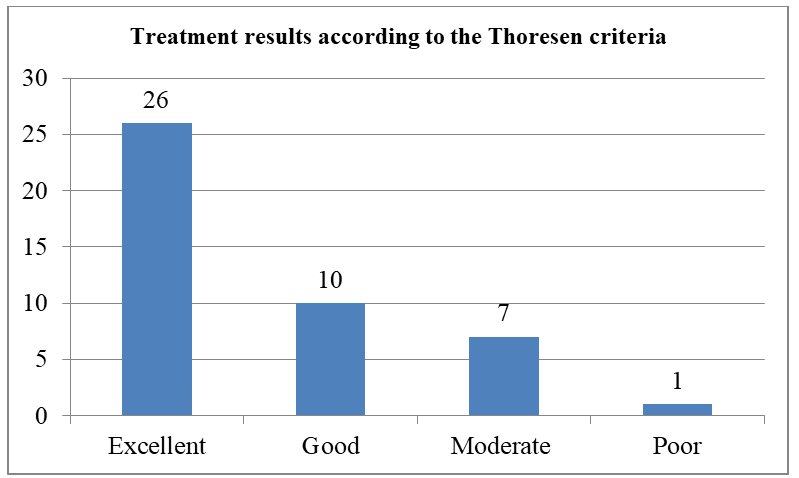Outcome of Femoral Shaft Fractures Treated with Intramedullary Interlocking Nail with Primary Dynamization
Abstract
Introduction: Fractures of the shaft of the femur are among the most common fractures encountered in Orthopaedic practice. Most of the fracture occurs in young adult due to high velocity injury. It can be life threating due to open wound, fatembolism, ARDS or multiple organ failure. Femoral nailing with reaming remains the gold standard for the treatment of isolated femoral fractures.
Objective: To assess the Outcome of Femoral Shaft Fractures Treated with Intramedullary interlocking Nail with Primary Dynamization.
Methods: The study was a prospective observational study with analytical design was conducted in National Institute of Traumatology and Orthopaedic Rehabilitation (NITOR), Sher-E-Bangla Nagar, Dhaka from July 2017 to June 2019. Patients with closed transverse fracture shaft femur (AO type 32-A3) attending the Emergency and Out Patient Department (OPD) of National Institute of Traumatology and Orthopaedic Rehabilitation (NITOR), Sher-E-Bangla Nagar, Dhaka, within the defined period were the study population.
Results: The mean age of the patients was 32.50±11.81 years where minimum age was 18 years and maximum age was 60 years. Above figure shows that, most of the patients (92.0%, n=46) were male and the rests (8.0%, n=4) were female. The mean duration of injury of the patients was 13.90±4.68 days where minimum duration of injury was 5 days and maximum duration of injury was 21 days. 88.6% (n=39) patients had no femoral shortness and rests (11.4%, n=5) had femoral shortness. Among the patients, 9 patients (20.4%) had varus malalignment and 7 patients (15.9%) had valgus malalignment. Two patients (4.5%) had good knee flexion and one patient (2.3%) had poor knee flexion. 88.6% (n=39) patients had no or up to 50 loss of extension of knee and rests (9.1%, n=4) had 100 loss of extension of knee and only one patient had 150 loss of extension of knee. Thoresen criteria, majority of the patients (59.1%, n=26) had excellent outcome and near about one fifth of the patients (22.7%, n=10) had good outcome. However, 15.9% (n=7) patients had moderate outcome and only one patient (2.3%) had poor outcome. Majority of the patients (80.6%) who had open reduction, had union in ?3 cortices within 24 weeks whereas all of the patients (100.0%) who had close reduction, had union in ?3 cortices within 24 weeks. Fisher Exact test showed that there was no significant association between type of reduction and radio-graphic union within 24 weeksas p=0.157.
Conclusion: Primary dynamization with intramedullary interlocking nail is effective for the management of transverse fracture shaft of femur (AO type 32-A3).

